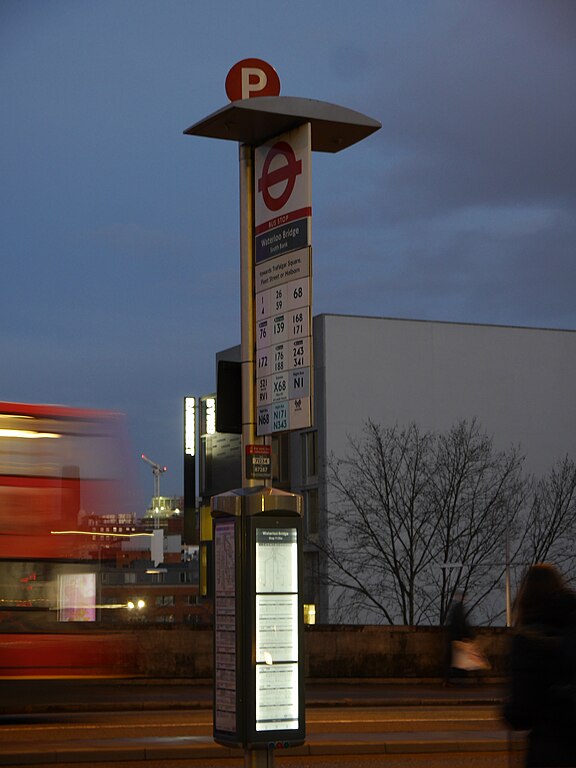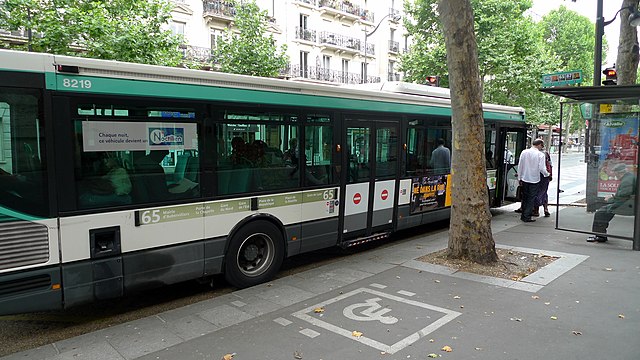What is a Smart Bus Stop?
You could say that a bus stop is, well, just a bus stop. Or is it?
Transport for London recently debuted a new Bus Stop display at Waterloo Bride in London. Now, this bus stop displays arrivals and departures. A regular timetable you could say.

My first experience with similar installations in India was in Bangalore at the Shanthinagar TTMC. There was a LED display with a wireless reception unit. It displayed the arrivals of Vayu Vajra buses towards the Airport in Kannada and English. This was followed by one in Mumbai along the Western Express Highway which displayed the ETAs of all buses in Marathi, and was pretty accurate. This was pretty much explained, in a previous post. In our transport-obsessed group, we have several discussions relating to buses and bus stops. During one of our conversations, we discussed a similar set-up at several bus stops along Mettupalayam Road in Coimbatore by the Corporation of Coimbatore for TNSTC buses.

This display, in Tamil shows the time, on the left, 05:37, which from the image metadata, I can gather is 05.37 in the evening, and the temperature 24°C. In between the two is the bus stop name: Vadakovai. The second line, which is scrolling, currently displays “Do not smoke here”. I’ve been told that it showed ETAs when it picked up an ETA. How this happened, however is a mystery. These displays appeared in 2012 and mysteriously vanished a year later.
Now, let us go deeper, and try and come up with an ideal ‘Smart Bus Stop’ shall we?
ACCESSIBILITY

The most crucial aspect of a bus stop is accessibility. Even if the bus stop is just a unipole like the BEST bus stops in Mumbai, the area around the bus stop must be marked, tiled, and leveled for people who are differently-abled. Ramps must be provided for both wheelchair-bound passengers as well as those with motor disabilities.
LEVEL BOARDING

Level boarding refers to the level of the floor of the bus being at the same level as the platform, similar to Metro Rail and BRT systems.
The advantages of level boarding is simple: It allows people to board and disembark faster, therefore reducing crowds at the exits. In the case of a BRTS bus, the platform can be raised as the doors are on the right-hand side and thus there are no steps. However, to achieve this on regular buses and bus stops, which are normally at a foot’s height from the road level, a low-floor bus would be required.
DYNAMIC INFORMATION DISPLAY

All bus stops need to be able to display details of buses, their arrival, route, in a dynamic manner. Digital signage similar to what Transport for London or the Corporation of Coimbatore did. When this is possible for trains, why not buses? Why do people who are waiting at a bus stop have to rely on their instinct to know when the next bus is due? Why can’t they just look up at a board and see where the bus is going? It would be cheaper to set up Display Units to show when the next bus is expected, rather than asking users to lookup an app or send a text message.
EASE OF USE

While this deals with the same as Accessibility as discussed above, this deals with how a commuter uses the bus stop rather than gets to it. The bus stop should have a tactile path around it, as well as a device to announce the bus routes stopping there. It can have a panel with the route details embossed in Braille as well. If the system picks up a bus less than 100 metres away, it can automatically announce the number.
The Bottom Line
So here are what a smart bus-stop needs, assuming that the buses on the service are low-floor buses with a GPS-based tracking unit to broadcast their location.
- Accessible for people with motor disabilities, differently-abled passengers, with a tactile path for the visually impaired.
- Have an information display unit connected to a central network to show the arrivals of buses and their routes.
- Announce route information, either based on availability [from GPS], or on request [by pressing a button].
- Incorporate level boarding for buses to speed up the process of getting on or getting off a bus, as well as reduce the effort taken in doing so.
![]()

3 thoughts on “Building a Smart Bus Stop”